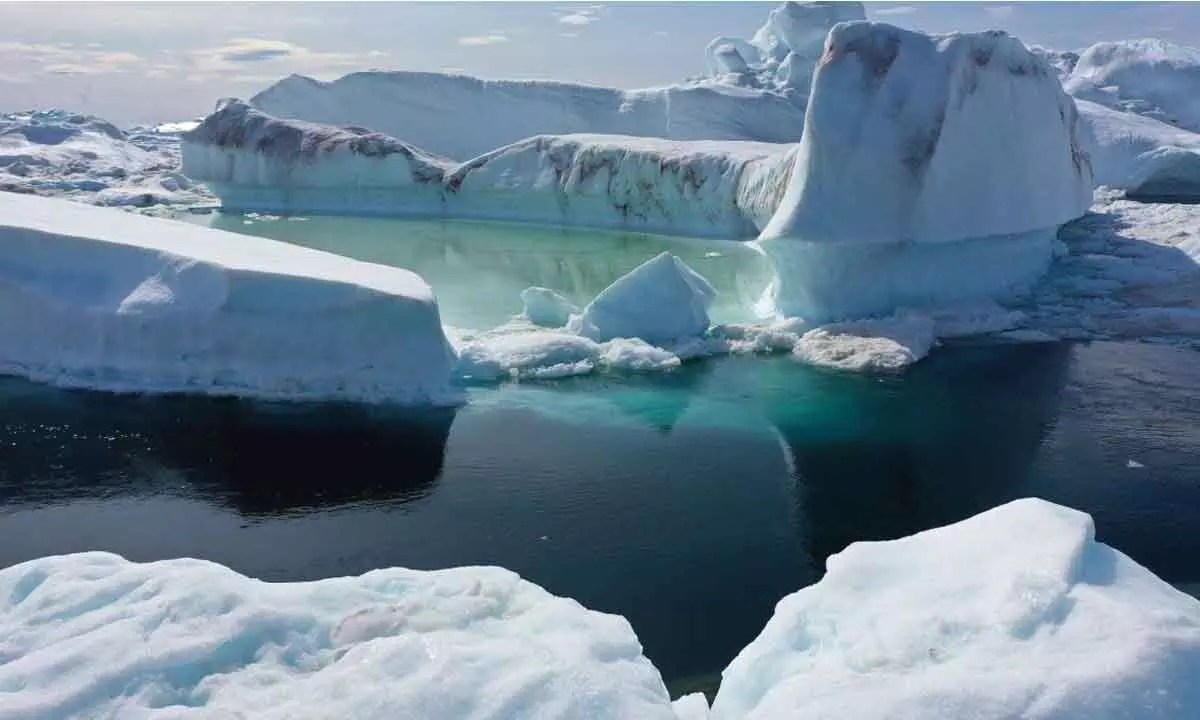What's going on with Greenland ice sheet?

It’s losing ice faster than forecast and now irreversibly committed to at least 10 inches of sea level rise
I'm standing at the edge of the Greenland ice sheet, mesmerized by a mind-blowing scene of natural destruction. A milewide section of glacier front has fractured and is collapsing into the ocean, calving an immense iceberg.
As a field glaciologist, I've worked on ice sheets for more than 30 years. In that time, I have witnessed some gobsmacking changes. The past few years in particular have been unnerving for the sheer rate and magnitude of change underway. My revered textbooks taught me that ice sheets respond over millennial time scales, but that's not what we're seeing today.
A study published Aug. 29, 2022, demonstrates – for the first time – that Greenland's ice sheet is now so out of balance with prevailing Arctic climate that it no longer can sustain its current size. It is irreversibly committed to retreat by at least 59,000 square kilometers (22,780 square miles), an area considerably larger than Denmark, Greenland's protectorate state.
Even if all the greenhouse gas emissions driving global warming ceased today, we find that Greenland's ice loss under current temperatures will raise global sea level by at least 10.8 inches (27.4 centimeters). That's more than current models forecast, and it's a highly conservative estimate. If every year were like 2012, when Greenland experienced a heat wave, that irreversible commitment to sea level rise would triple. That's an ominous portent given that these are climate conditions we have already seen, not a hypothetical future scenario.
Our study takes a completely new approach – it is based on observations and glaciological theory rather than sophisticated numerical models. The current generation of coupled climate and ice sheet models used to forecast future sea level rise fail to capture the emerging processes that we see amplifying Greenland's ice loss.
How Greenland got to this point
The Greenland ice sheet is a massive, frozen reservoir that resembles an inverted pudding bowl. The ice is in constant flux, flowing from the interior – where it is over 1.9 miles (3 kilometers) thick, cold and snowy – to its edges, where the ice melts or calves bergs.
In all, the ice sheet locks up enough fresh water to raise global sea level by 24 feet (7.4 meters). Greenland's terrestrial ice has existed for about 2.6 million years and has expanded and contracted with two dozen or so "ice age" cycles lasting 70,000 or 100,000 years, punctuated by around 10,000-year warm interglacials. Each glacial is driven by shifts in Earth's orbit that modulate how much solar radiation reaches the Earth's surface. These variations are then reinforced by snow reflectivity, or albedo; atmospheric greenhouse gases; and ocean circulation that redistributes that heat around the planet.
What does the future hold?
What the future will bring is trickier to answer. The models used by the Intergovernmental Panel on Climate Change predict a sea level rise contribution from Greenland of around 4 inches (10 centimeters) by 2100, with a worst-case scenario of 6 inches (15 centimeters). But that prediction is at odds with what field scientists are witnessing from the ice sheet itself.
According to our findings, Greenland will lose at least 3.3% of its ice, over 100 trillion metric tons. This loss is already committed – ice that must melt and calve icebergs to reestablish Greenland's balance with prevailing climate.
We're observing many emerging processes that the models don't account for that increase the ice sheet's vulnerability. For example: Increased rain is accelerating surface melt and ice flow.
There are also "unknown unknowns" – those processes and feedbacks that we don't yet realize and that models can never anticipate. They can be understood only by direct observations and literally drilling into the ice.
That's why, rather than using models, we base our study on proven glaciological theory constrained by two decades of actual measurements from weather stations, satellites and ice geophysics.
It's not too late
It's an understatement that the societal stakes are high, and the risk is tragically real going forward. The consequences of catastrophic coastal flooding as sea level rises are still unimaginable to the majority of the billion or so people who live in low-lying coastal zones of the planet.
Personally, I remain hopeful that we can get on track. I don't believe we've passed any doom-laden tipping point that irreversibly floods the planet's coastlines. Of what I understand of the ice sheet and the insight our new study brings, it's not too late to act. But fossil fuels and emissions must be curtailed now, because time is short and the water rises – faster than forecast.
(Writer is Professor of Glaciology, Arctic Five Chair, University of Troms; Courtesy)


















